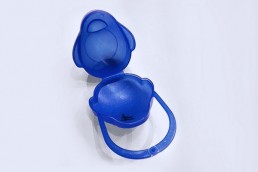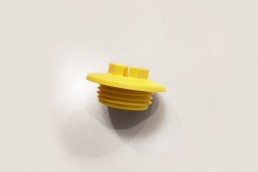Materials
Plastic materials
Our company operates in the field of thermoplastics, a group of plastic materials that acquire malleability, ie they soften under the action of heat; therefore supplying energy the appropriate level of fluidity is reached to be injected into the mold, which allows to model or form finished objects and then by cooling they return to the solid state maintaining the shape of the impression.
At a subsequent heating they return to soften and to be more or less fluid, a process that theoretically can be repeated several times compatibly with the peculiarities of each individual thermoplastic material. In turn, the thermoplastic materials are divided into two groups:
Amorphous structures
Crystal structure
Here below some of the main materials processed by Brighi Srl.
MATERIALS – AMORPHOUS STRUCTURES
Some examples
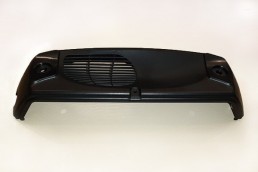
ABS (acronilite butadiene styrene)
An amorphous thermoplastic material with an opaque appearance can be colored in a wide range of colors. This material is available in different grades with the possibility of obtaining optimized performance suitable for the particular use of the finished product.
This plastic material offers good thermal stability, a low shrinkage in molding is available in the version suitable for contact with food.
The pieces produced in ABS, can be ennobled with the galvanic process (chrome plating, gilding etc.), moreover they can be painted and also glued and ultrasonically welded together with ease and good tightness over time.
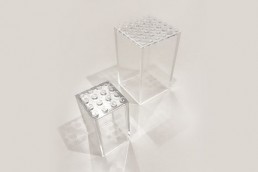
PMMA (polymethylmethacrylate)
Thermoplastic material with amorphous structure, has a high transparency and superficial shine. It has excellent optical qualities and can be colored in a wide range of colors both translucent and opaque.
It offers a good mechanical resistance, has a low absorption of humidity and moderate resistance to scratching.
The use of this material is extended to various sectors, also approved for contact with food.
It is suitable for ultrasonic welding and bonding.
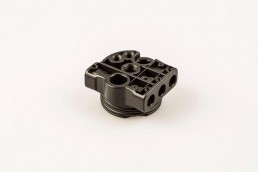
PSU (polysulfone)
Thermoplastic material with amorphous structure, with good mechanical and thermal characteristics, excellent dimensional stability and excellent toughness even at low temperatures.
The low moisture absorption and the excellent resistance to hydrolysis, allow the use in environments in contact with very hot water.
Continuous operating temperatures without a load can reach 160° C continuously.
There are versions reinforced with glass fiber, with greater rigidity, greater resistance to high temperatures and low coefficient of linear thermal expansion.
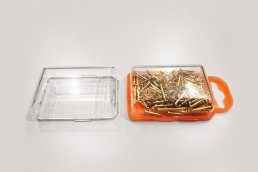
PS (polystyrene)
Thermoplastic material with amorphous structure with low moisture absorption, good dimensional stability, it is transparent, can be colored in all shades both translucent and opaque.
The use of this material is extended to various sectors, also approved for contact with food.
It is suitable for ultrasonic welding and bonding.
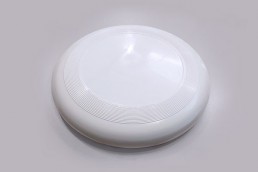
PS-HI (shock-resistant polystyrene)
Thermoplastic material with amorphous structure with low moisture absorption, good dimensional stability, it is opaque, can be colored in all shades.
The presence of the SB molecule (styrene butadiene) offers good impact resistance. The use of this material is extended to various sectors, also approved for contact with food. It is suitable for ultrasonic welding and bonding.
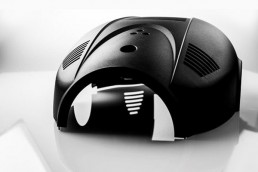
PC (polycarbonate)
Thermoplastic material with amorphous structure with low moisture absorption, good dimensional stability, is in a transparent state with a high surface gloss, can be colored in all shades both translucent and opaque.
Excellent toughness even at low temperatures, good self-extinguishing thermal performance of nature (UL94-V2).
The use of this material is extended to various sectors, approved for contact with food.
It can be added to improve UV resistance, and flame retardancy up to UL94-V0 class.
It can be reinforced with the addition of fillers such as glass fiber etc.
Use in continuous contact with hot water above 50 ° C is not recommended, where it shows insufficient hydrolysis resistance.
It is suitable for ultrasonic welding and bonding.
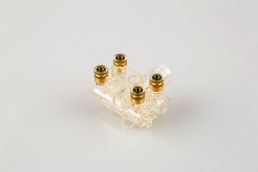
PA 12 (amorphous polyamide)
Although belonging to the family of polyamides, this thermoplastic material has an amorphous structure, composed of aliphatic, cycloaliphatic and aromatic elements. It has a transparent appearance, excellent surface hardness, high rigidity, good resistance to hydrolysis, wear resistance, resistance to chemical agents, low moisture absorption and consequent dimensional stability.
Approved for direct contact with food. Also available reinforced with fibers.
Wide range of use also for good electrical properties.
MATERIALS - CRYSTALSTRUCTURE
Some examples
PE (polyethylene)
Thermoplastic material with a semi-crystalline structure, which is divided into different types of PE:
– LDPE: low density polyethylene;
– MDPE: medium density polyethylene;
– HDPE: high density polyethylene;
– LLDPE: linear low density polyethylene;
Polyethylene has the property of not absorbing water, can be colored in all opaque shades, offers good resistance to wear and is available in versions for contact with food. Polypropylene has good mechanical and chemical characteristics; copolymers have a greater impact resistance than homopolymers.
It is possible to reinforce the polymer with mineral fillers or glass fibers to achieve optimal characteristics for the use of the product. Remarkably aesthetic material that can be colored in all opaque shades, with poor UV resistance, but can be stabilized with additives, achieving a good degree of application with direct exposure to sunlight. It is possible to add the polymer to reach the maximum UL94-V0 fire class.
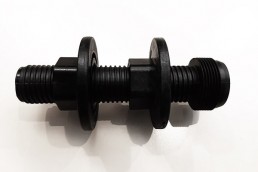
PA (polyamide)
Thermoplastic material with a semi-crystalline structure, the group of polyamides has good characteristics of mechanical strength, excellent impact resistance and high toughness. Among the other features they deserve to be highlighted: wear resistance, low friction coefficient and high fluidity.
There are various types of semi-crystalline polyamides on the market, among the main ones: polyamide 6 – polyamide 6.6 these can be loaded with fibers, glass spheres and with mineral fillers that can be modulated in percentage to obtain the most suitable performance for use. Since polyamides after molding absorb a significant amount of moisture, dimensional stability is not a quality of this technopolymer, but by virtue of conditioning it increases its flexibility.
To reduce problems due to friction, you can add graphite or molybdenum bisulphide fillers.
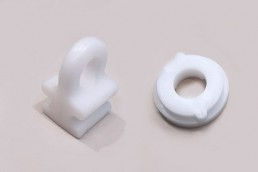
POM (polyoxymethylene)
Thermoplastic material with a semi-crystalline structure, the group of polyamides has good characteristics of mechanical strength, excellent impact resistance and high toughness. Among the other features they deserve to be highlighted: wear resistance, low friction coefficient and high fluidity.
There are various types of semi-crystalline polyamides on the market, among the main ones: polyamide 6 – polyamide 6.6 these can be loaded with fibers, glass spheres and with mineral fillers that can be modulated in percentage to obtain the most suitable performance for use. Since polyamides after molding absorb a significant amount of moisture, dimensional stability is not a quality of this technopolymer, but by virtue of conditioning it increases its flexibility. To reduce problems due to friction, you can add graphite or molybdenum bisulphide fillers.
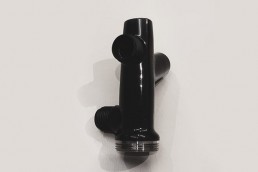
PBT (polybutylene terephthalate)
It is the version of the molded polyester with good resistance to abrasion and chemical inertia.
The thermal properties are relevant with use at temperatures up to 140 ° C without load.
The material can be reinforced with mineral fillers, spheres and glass fibers.
The pieces produced in PBT can work in damp environments or in water, but with water temperatures below 50 ° C, the base resin has a low resistance to hydrolysis.

